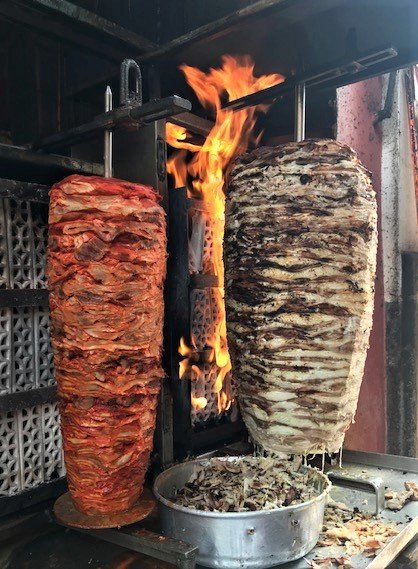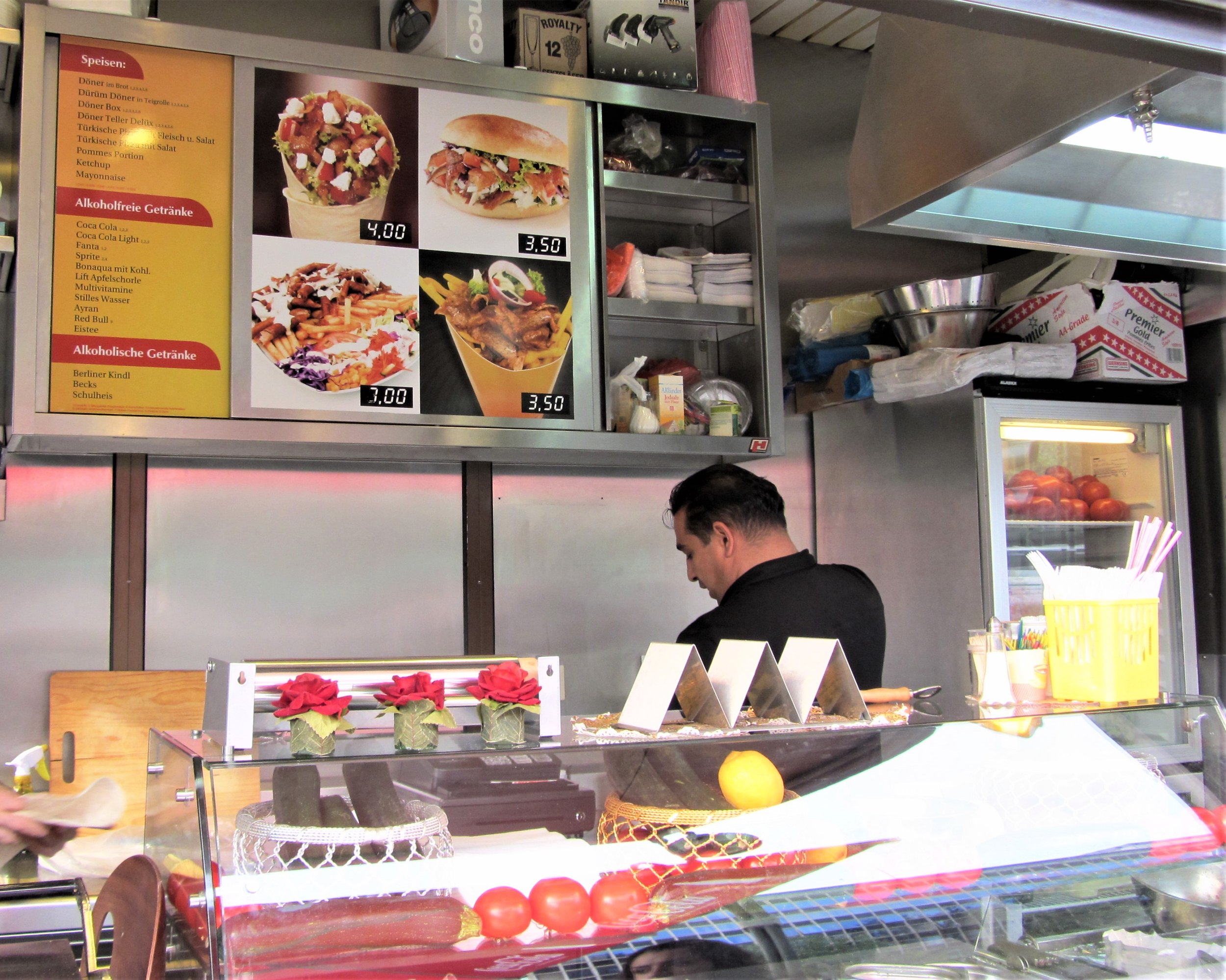Jonathan C. Lewis
Author and Artist
Turkish Delight
A fictional travelogue; four minutes to read.
Traveling the world, I collect tidbits, observations, insights to liven up my high school history classes—anything to stave off student boredom. Street food is my entry point for understanding—and misunderstanding—a country.
At Mustafa's Gemüse Kebap, I’m in line with a dozen or so hungry Berliners. The döner kebab is a ubiquitous fast food in modern Germany because, other than Turkey, more Turks live in Germany than anywhere else in the world.
The aroma wafting from the food truck quickens my appetite, but the line moves unbearably slowly. Keeping my back to the wind, I shift my weight from one foot to the other. People zipper and rezipper their parkas, adjust their hoodies.
A few steps behind me, a hacking, raspy voice catches my notice. A stooped man with wisps of white hair poking out from under his knitted beanie—old enough to have survived World War II—spits out a curse, “Brown shirts!” Others in line murmur agreement, and shake their heads.
He’s glaring across the street at a half-dozen loitering skinheads smoking cigarettes, showing off their shaved heads, metal piercings and menacing boots. A few have neo-Nazi tattoos. They’re scowling at Mustafa’s. A block away, a German polizei car is parked.
In elementary school, bullies terrorized my recess. In high school, football players were cafeteria dictators. I know what comes next. I swallow my saliva. My breathing is shallow.
My head swivels around to see if anyone else is frightened. A few people abandon the line. I can’t tell if they’re tired of the long wait or running away. My rapid breathing vaporizes into droplets and plumes.
Like Roman soldiers phalanxed to fend off invaders, the Mustafa line bunches together. When it comes to fighting fascism, there’s safety in numbers. My brain wills the line forward.
Travel guides extoll getting to know “the locals,” but hanging out with street gangs is never on my itinerary. My mouth tastes like I am chewing on metal bullet casings.
Behind the food counter, an olive-skinned carver, roughly in his forties, with a slight paunch, has dark hair, thick eyebrows, strong nose and a sharp knife. He growls, “Next!” Otherwise, he doesn’t talk, laugh, smile or frown. His grandfather probably fought with Ataturk at Gallipoli.
My döner kebab is succulent, aromatic, abundant. Thinly sliced lamb is carved off a rotating rotisserie with Germanic precision, then stuffed into pita bread, buttered and toasted, then layered with grilled veggies, tomato, lettuce, cabbage, onion, sumac, cheese and sauces. Clutching my döner kebab—half in my hand, half in my mouth, I scurry off.
Glancing backward over my shoulder, the neo-Nazis have repositioned themselves. At the back of Mustafa's customer line, the skinheads are laughing, almost giggling, while they wait their turn to devour slices of Turkish heritage.
My mind stalls. What I expected, what everyone feared, was a tasteless display of anti-immigrant hatred.
Human survival depends on snap judgments, but in a foreign country my snap judgments can be as flaky as a Turkish pastry. Friend or foe? Something to eat or something to eat me? Troublemakers or teenagers costumed as alt-right thugs?
“History,” I will have to tell my students, “is learning who and what to fear—and when.”

